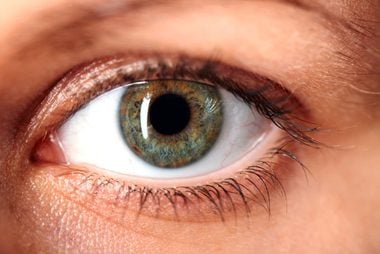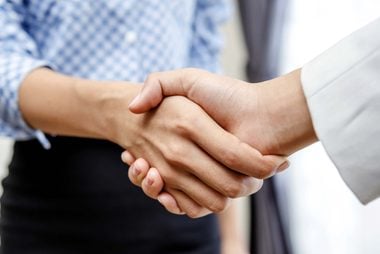
The gesture of a handshake
A handshake is perhaps one of the oldest forms of introductory communication, dating back thousands of years. Though its origins are murky, a popular theory is that it began as a way of relaying peaceful intentions. A person would extend their empty right hand to show a stranger they were not holding weapons and did not have ill will toward them. The up-and-down motion is thought to have been a means of removing any knives or daggers hidden up a sleeve. A handshake is also thought to have been a symbol of good faith when making an oath or promise. Today, handshakes serve as a form of introduction meant to initiate conversation, whether it be in a social setting or a professional one. But it holds a lot more weight than just serving as an unspoken greeting. Handshakes reveal a lot about the type of person you are, and how you feel in the situation you are in when doing it. Find out if your handshake is working for or against you, and how you can ensure you do it right every time.
The dominant handshake
Research shows that handshakes matter, and some think that a dominant handshake goes in too hard. You never want the other person to feel like you’re trying to take the upper hand by forcing their palm up. Lillian Glass, PhD, a renowned body language expert, based in Beverly Hills, California, says shaking someone’s hand too hard shows competition. “It’s a power struggle,” she says.

The limp handshake
When you go in for a handshake with someone and it feels like their hand is nonexistent, how does it make you feel? According to Dr. Glass, a weak handshake exemplifies a lack of interest. “If you lack all firmness, it tells the other person you don’t care; you’re not into them.” Whether it’s a stranger or a professional, people are sensitive toward your gestures, and will likely form immediate judgments from your handshake that set the tone of your circumstances.

The politician’s handshake
When the initiator places both hands on the other person’s, this is a sign of honesty and trust. “It’s not a power trip, it’s a liking trip,” Dr. Glass says. “And when the initiator uses their free hand to grasp the receiver’s elbow, it says, ‘I really, really like you.'”

The rushed handshake
Rushing a handshake as quickly as you come out shows nervousness, according to Dr. Glass. People who can’t hold on for a moment to establish the introduction show discomfort. “It also shows that they really don’t care to be in the situation at all, which offends the receiver.” Rushing anything typically never makes for a positive outcome, so slow it down to generate calmness.

The look away handshake
A lack of eye contact is more than just awkward, it’s rude. “If you make immediate eye contact but then look away, you’re showing disinterest and awkwardness,” says Dr. Glass. Handshakes are supposed to help ease any introductory tension, not add to it. This type of handshake is often associated with a rushed one.

The lingering handshake
Going in with a good firm grasp that’s not knuckle-grinding is important, but when you don’t let go, it gives off desperation. Though you definitely don’t want to rush it, try not to hold on for longer than two full seconds.

The intense glare handshake
If you stare into someone’s eyes for too long as your handshake lingers, you’re showing aggression, according to Dr. Glass. “Don’t purse your lips and squint your eyes,” she advises.

The perfect handshake
To make a good first impression, a handshake can mean everything. “A good handshake entails the initiator’s palm touching the receiver’s palm, with their thumb wrapped around the other’s thumb,” says Dr. Glass. “Connecting through touch sends the message of friend over faux.” You want to make sure your grasp is firm, but not too firm, and definitely not too light. “Always maintain eye contact, but ensure you have a soft, warm gaze. Any intense glare is to be avoided.”
